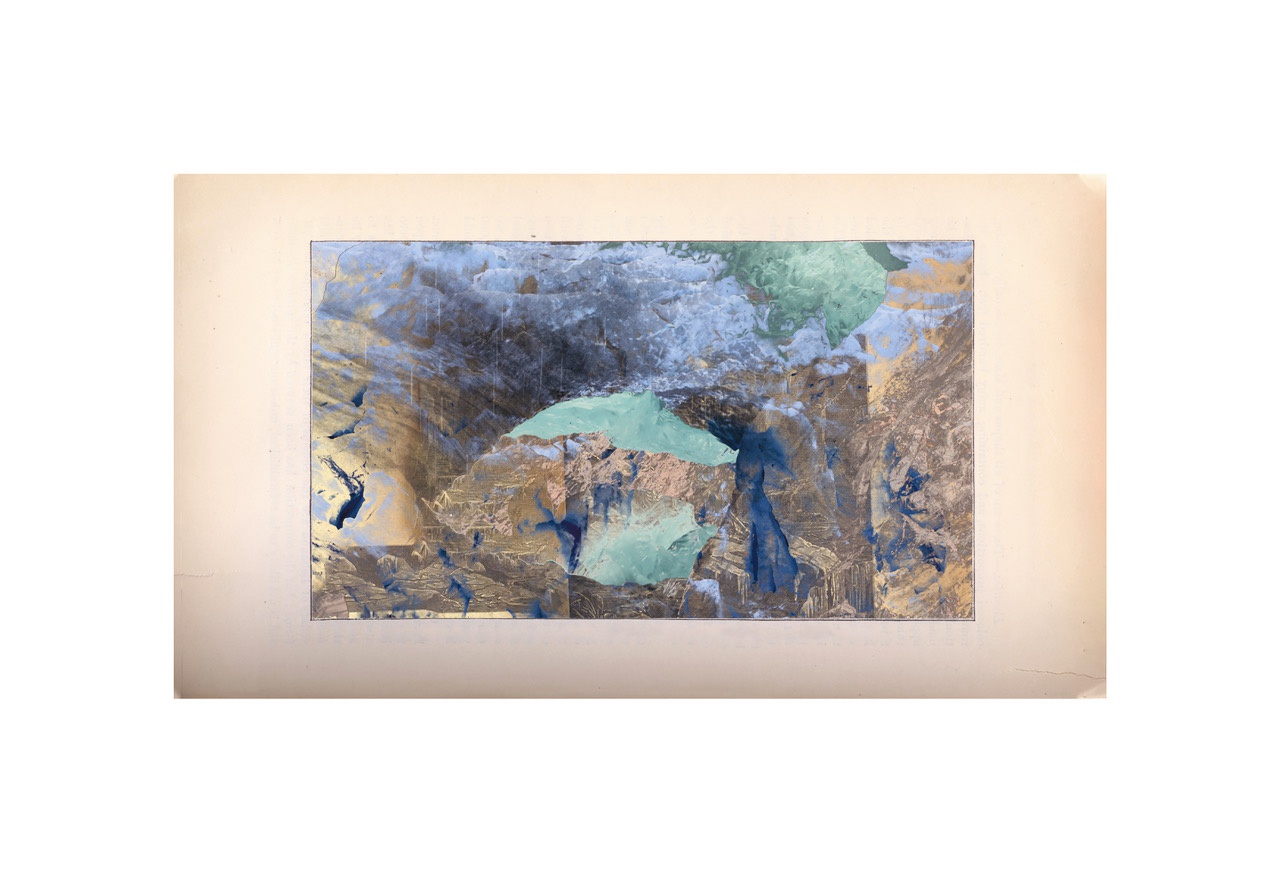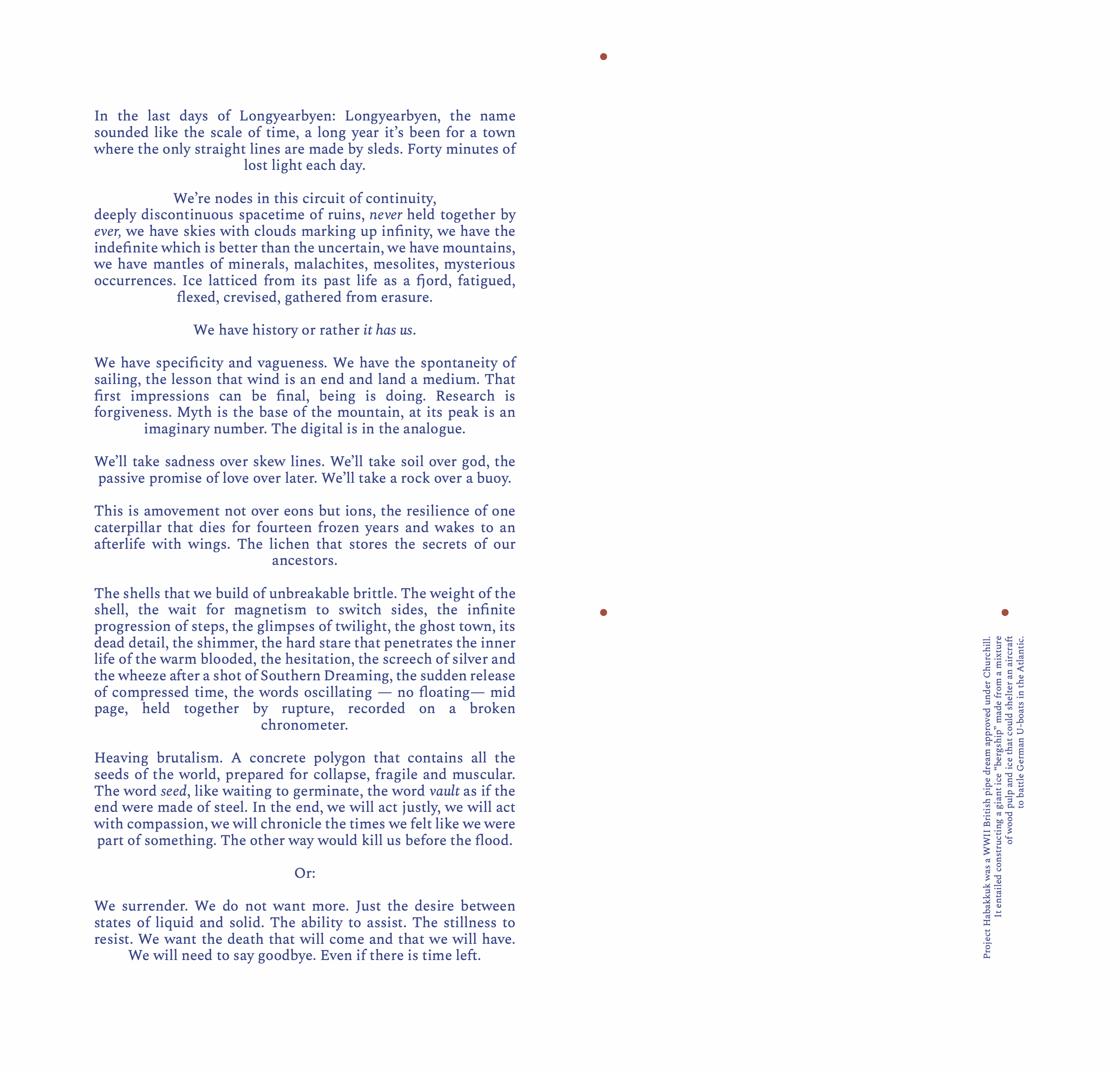GCC Talks To Artist, Himali Singh Soin
"We need to give institutions the strength to decolonize from within and in a holistic manner, to turn off exhibitions when no one is there, to actively give back to the climate movement, to return power to the grid, to return power to those quashed by it."
GCC interviews Himali Singh Soin, writer, artist and GCC member who deals with questions of the natural environment and ecological loss in her work. Himali has kindly shared her poem Preparing For The Flood from the series We Are Opposite Like That alongside the interview.
GCC: You spent 5 years researching the Arctic and Antarctica which resulted in the ongoing series of interdisciplinary works entitled, we are opposite like that. How did this research influence your understanding of the climate crisis?
HSS: It was the journeys there that felt like being crushed by a sudden meteor or something. To travel such long days and to arrive in such intensely unfamiliar surroundings meant you had a lot of time to think. I realized that our relationship to climate justice will always be contradictory, complicated, complicit. I also realized that the earth itself is an amazing agent of resistance, and it is for us to form a network of solidarity with it, to help it along, and, in that process, to recognize how we oppress it and extract from it. I realized that poetry can make things happen. Not simply writing poetry, but the act of witnessing and being with land using poetic eyes;a poetic temperament. This means to tread so lightly that you can listen to its many voices, to listen to its silences too.
GCC: The published book, we are opposite like that, was produced using minimal carbon emissions. Could you tell us more about the process behind this and the materials you chose?
HSS: The book was printed as offset lithography, so it does produce carbon and electricity emissions. Combining this with the shipping costs, I produced approximately 2,000 kgs of CO2, and planted around 100 trees in the Himalayas, which will absorb approximately 100,000 Kgs of carbon in its lifetime.
In terms of materials, I used organic canvas for the cover, natural inks, recycled paper and hand-sewn binding. The bookmarks made of emergency blankets are not biodegradable, but it is protective material. It is archival and it makes the pages beside it shimmer, reminding us that there is a new natural, and that this metallic relationship also contains strings of hope and wonder.
GCC: When did doing something about your environmental footprint shift in your head from important to urgent; passive to active? Was there a specific lightbulb moment?
HSS: I feel like I was born into a catastrophic world. As a young person, I was taken on mountain trips to clean up garbage, and to jungles where if you wanted to see a tiger, you had to be quiet and watch for its paws. It’s a slow cultivation of a life where other species exist on the same plane as you. There were often electricity and water shortages, so we grew up using resources with care and humour. Still, there is much I am nostalgic for: there used to be blue skies in Delhi, and now it’s mostly a haze. There used to be sparrows. Less radiation. The sun felt nurturing and not toxic. Even clarity is a privilege afforded to those in the northern nations. So what felt like a gesture of reverence when I was growing up feels like an imperative now.
GCC: One of the major concerns within the climate change conversation is the fact that its fallout is unequally distributed across the planet. As an artist, how do you approach the intersection between the ecological, class, race, gender and representation?
HSS: I approach this intersection and then never really reach it. My South Asian Futurism manifesto stems from finding teleconnections (connections that are not scientifically established but telepathically/intuitively evident) between the arctic winds and the indian monsoon. In creating a picture of a world that is entangled, we find that we are not composed of a dot here, but are really dragging across the planet, the page, a line. My desire is for us to understand that someone else’s trauma has become our nourishment, and that distance and proximity are not so far apart.

GCC: GCC was set up to enable galleries to achieve the targets of the Paris Climate Agreement, but we are also in the process of speaking with artists to form a network, as we are aware that in order for significant shifts to happen, action must be taken at every link in the chain. You’ve been working with us to begin these conversations. What do you see as the artist’s role in initiating change?
HSS: I think artists are meant to be sneaky fortune tellers in a way, offering a glimpse into the apocalypse that is always about to occur. But if it is our work to offer a critique of those systems from which we need release. We cannot be enabling those systems.
I think we will never and should not be able to have a structure for how art is produced, it will always be relative and unique and particular— but it should be so with kindness, lightness and sensitivity. Kind to those we work with, whose labour is often unrecognized; kind to the earth through the materials we use (stop using toxic paint!); kind to ourselves for getting it wrong sometimes. We need to give institutions the strength to decolonize from within and in a holistic manner, and to make this an energetic engagement: to turn off exhibitions when no one is there, to actively give back to the climate movement, whether through collaborations or the food they produce, the gardens they keep, the way they dispose of work that cannot be shipped back. To return power to the grid. To return power to those quashed by it.

Preparing for the flood is one of the many messy theories, unreliable observations and letters of love that comprise 'we are opposite like that', Himali's almanac from the polar circles.

